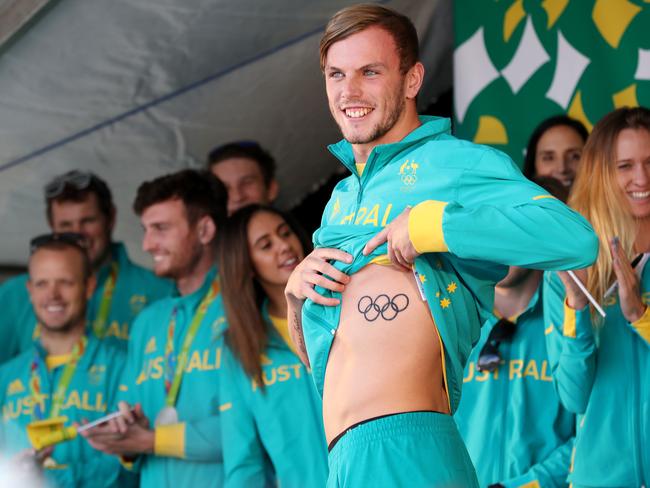‘Not allowed’: Bizarre tattoo ruling divides Olympics and Paralympics
One of the most nonsensical rules in sport has reared its head again as Paralympians call out the blatant hypocrisy.
Olympics
Don't miss out on the headlines from Olympics. Followed categories will be added to My News.
One of the most nonsensical rules in sport has reared its head again, with one Paralympian calling out the blatant hypocrisy.
British swimmer Josef Craig’s disqualification from the men’s S8 100m final at the 2016 International Paralympic Committee (IPC) Swimming European Championships served as a stark reminder of the stringent rules that differentiate the Paralympics from the Olympics.
Despite winning his heat with a perfect performance, Craig was disqualified — not because of his swimming, but because of his Olympic rings tattoo.
At the time, Craig was a rising teen star and medal favourite for Rio 2016, having already secured a gold medal in the men’s 400m freestyle at the 2012 London Paralympics.
But during the European Championships, Craig’s visible tattoo of the Olympic rings and Team Great Britain’s lion’s head on his chest led to his disqualification.
“Body advertising is not allowed in any way whatsoever and that includes the Olympic rings. The athlete did not wear a cover and was therefore disqualified,” an IPC spokesman explained at the time.
“All teams are informed of the advertising policy at a technical meeting prior to competition, so it wasn’t as if they had not been reminded about the rules.”

The incident was a bizarre example of the strange distinctions between the IPC and the International Olympic Committee (IOC), with the two governing bodies operating under separate sets of rules.
While Olympians are generally allowed to display Olympic rings tattoos during the Olympics, the IPC classifies tattoos as a form of advertising, which is prohibited at Paralympic events.
“We take a commonsense approach to tattoos whatever they are,” the spokesman continued.
One example that was cited was American middle-distance runner Nick Symmonds, who sold space on his skin for advertising. He was told to cover his tattoos with blank tape or patches before competing.
Symmonds famously sold almost 23 cm of skin on his arm to T-Mobile for $21,800 before Rio 2016, but the deal conflicted with official Team USA sponsors like AT&T.


The disqualification of Craig over his Olympic rings tattoo has shown the world the nonsensical boundary between the two organisations’ policies.
The IPC’s tattoo-specific rule was introduced before London 2012 but wasn’t fully enforced until after the Games, when athletes like American Paralympian Rudy Garcia-Tolson competed with visible Olympic rings tattoos.
Garcia-Tolson, who won silver in the 200m individual medley in London, said he “felt like an Olympian” and therefore had a right to sport a rings tattoo.
“I don’t really agree with it, but it’s the rules, so we’re just going to have to go with it ... I don’t want to put all this hard work in and then get disqualified for something I have on my body.”
Originally published as ‘Not allowed’: Bizarre tattoo ruling divides Olympics and Paralympics




